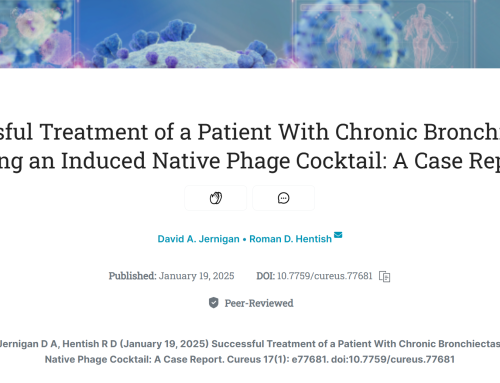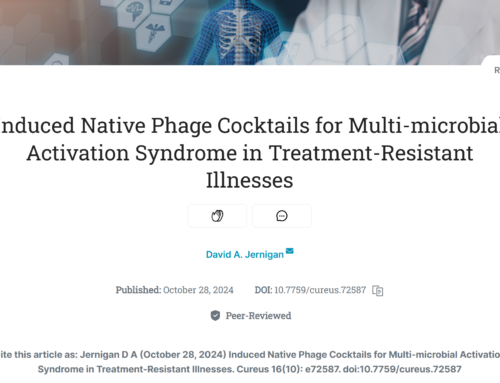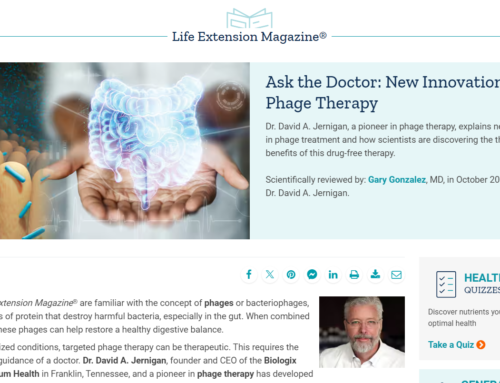When it comes to supporting the body’s natural ability to manage microbial challenges, Induced Native Phage Therapy (INPT) options such as Inducen formulas and Supportive Oligonucleotide Therapy (SOT) offer distinct approaches. At Biologix Center, we’re committed to helping you understand your choices so you can make informed decisions about your wellness journey. Here’s a breakdown of how these two methods compare, focusing on their strengths and limitations for the benefit of consumers.
Inducen Formulas: A Broad, Natural Approach
Inducen formulas use electromagnetic (EM) signatures to encourage the body’s native phages—viruses that naturally target bacteria—to stay active against specific pathogens present in the system. Delivered two to three times daily for one to six weeks, this approach aims to support microbial balance in a way that aligns with the body’s inherent processes.
Advantages:
-
Multi-Target Flexibility: Each Inducen formula contains multiple EM signatures—like unique signals—that activate only against pathogens present in the body. For example, Inducen-CIRS includes signatures for Porphyromonas gingivalis, Pseudomonas aeruginosa, and Mycobacterium tuberculosis. If only one is present, that signature works alone; if multiple are active, they function independently without interference.
-
Consistent Support: The ongoing dosing keeps phages engaged, with clinical observations suggesting pathogen reduction ranging from partial to complete—ideally 85% or higher in tougher cases, up to 100% with a strong phage population and full adherence.
-
Adaptability: Native phages can evolve alongside bacterial defenses, like biofilms or persister cells, offering a dynamic response that static treatments can’t match.
-
Gentle Experience: Across approximately 200,000 doses administered for various microbes, minimal detox reactions have been reported, making it a well-tolerated option.
-
Cost-Effective: A 5-day course (10 ampules) is typically under $500, while a 20-day regimen for multiple pathogens costs around $2,000—great value for broad support.
-
Natural Alignment: Containing only nano-sized minerals in sterile water, Inducen works with the body’s phage-mediated regulation, falling under the Dietary Supplement Health and Education Act (DSHEA) of 1994 as a structure/function support product.*
Considerations:
-
Phage Dependency: Efficacy relies on the presence of native phages; if a patient’s phage population is depleted (say, from past antibiotic use), results may vary.
-
Variable Outcomes: Some types of bacteria have stronger phage defenses that may result in incomplete killing, though 85% or better is a realistic goal in many cases.
-
Longer-Term Costs: Extended use (e.g., 6 weeks) could climb to $3,000–$4,000, though this remains competitive for complex needs.
SOT: Precision for a Single Target
SOT uses small interfering RNA (siRNA) or antisense oligonucleotides (ASOs) tailored to silence a specific pathogen’s genes, such as those involved in replication. Delivered via a single IV infusion, it’s a highly targeted option for addressing one identified microbe.
Advantages:
-
Pinpoint Accuracy: SOT focuses on one pathogen—like Borrelia in Lyme disease—with lab-confirmed DNA reduction often seen after one or two doses.
-
Long-Lasting Effect: A single infusion can work for 3–6 months, eliminating the need for daily intervention.
-
Clear Pricing: Each dose ranges from $2,500 to $2,750, covering custom synthesis and administration—a straightforward cost for a single-target focus.
Considerations:
-
One-at-a-Time Limit: SOT tackles only one pathogen per formulation. Multiple infections require separate rounds, each needing lab confirmation and additional cost.
-
Mutation Risk: If a pathogen mutates after the formula is made, effectiveness could drop until a new version is crafted.
-
Higher Investment: A single round, including consultation and testing, totals $4,000–$6,000. Addressing multiple pathogens could push annual costs to $10,000–$15,000, with no insurance support due to its non-FDA-approved status.
-
Detox Reactions: Some experience fatigue or aches for weeks post-infusion, a factor to weigh for sensitive individuals.
Comparison Table:
| Feature | INPT (Inducen Formulations) | SOT (Supportive Oligonucleotide Therapy) | Antibiotics |
|---|---|---|---|
| Mechanism of Action | Uses electromagnetic (EM) signatures to induce native bacteriophages in the body to enter the lytic phase and attack bacteria. | Uses synthetic small interfering RNA (siRNA) or antisense oligonucleotides (ASOs) to disrupt the replication of a specific pathogen. | Kills bacteria directly using chemical compounds, either by inhibiting growth (bacteriostatic) or directly killing bacteria (bactericidal). |
| Targeting Approach | Broad-spectrum targeting, affecting multiple pathogens independently within one formulation. | Highly specific, targeting only a single pathogen per formulation. | Broad-spectrum and indiscriminate, affecting both harmful and beneficial bacteria. |
| Administration Frequency | Administered twice or three times daily for 1-6 weeks. | Single-dose intravenous infusion per treatment cycle. | Requires daily or multiple doses over weeks to months. |
| Duration of Effect | Effects are sustained as long as the EM signal is applied. | Effects last for 3-6 months per infusion. | Effectiveness depends on consistent dosing; resistance can develop over time. |
| Pathogen Adaptation | Native phages can evolve in response to bacterial defenses, improving effectiveness over time. | Pathogens can mutate, potentially reducing the therapy’s effectiveness over time. | Bacteria can develop resistance, making antibiotics less effective over time. |
| Number of Pathogens Treated | Multiple pathogens can be treated simultaneously using a single formulation. | Only one pathogen is targeted per formulation; additional infections require separate SOT treatments. | Can treat multiple infections but may require different antibiotics for different bacteria. |
| Time to Start Treatment | Immediate availability; no need for personalized synthesis. | Requires a blood draw and personalized synthesis, leading to a delay of several weeks before treatment begins. | Typically available immediately but may require culture testing for precision targeting. |
| Herxheimer Reaction Risk | Low risk of Herxheimer reactions; over 200,000 doses show minimal adverse effects. | Higher risk of Herxheimer reactions, with detox symptoms lasting for weeks post-treatment. | High likelihood of Herxheimer reactions due to bacterial die-off and immune response. |
| Toxicity | Non-toxic, composed of nano-sized minerals in sterile water. | Non-toxic but involves genetic interference, which may have unforeseen effects on cellular processes. | Toxicity varies; can have side effects on organs, gut microbiome, and immune function. |
| Cost per Treatment Cycle | Approximately $500 for a 5-day course, $2,000 for 20 days. | $2,500–$2,750 per infusion, covering synthesis and administration. | Varies widely; some antibiotics are inexpensive, while IV and long-term regimens can be costly. |
| Total Annual Cost for Multiple Infections | $3,000–$4,000 for extended treatment (6 weeks); remains cost-effective for polyinfections. | $10,000–$15,000 for three infusions per year, plus additional costs for multiple infections. | Costs can range from a few hundred dollars for short courses to tens of thousands annually for chronic infections. |
| Regulatory Status | Falls under the Dietary Supplement Health and Education Act (DSHEA) of 1994. | Not FDA-approved; lacks regulatory recognition as an officially approved treatment. | FDA-approved and widely used in medical practice. |
| Potential for Enhancement | Potential enhancement with intravenous Mg²⁺ to improve phage lysis, increasing effectiveness. | No direct enhancement strategies comparable to Mg²⁺ synergy in INPT. | No enhancement similar to Mg²⁺ synergy; some antibiotics require adjunct therapies. |
| Suitability for Polyinfections | Highly suitable, as it can target multiple infections simultaneously without requiring individual formulations. | Not ideal for polyinfections due to its single-pathogen limitation and high costs per pathogen. | Can be used for multiple infections but may cause broad collateral damage to the microbiome. |
| Suitability for Single Infections | Effective for single infections but may be more than necessary if only one pathogen is present. | Best suited for targeting single, well-identified infections with genetic precision. | Effective for single infections but may require precise bacterial identification for optimal efficacy. |
Real-World Scenarios: How They Stack Up
Imagine a respiratory challenge with Strep pneumoniae. Inducen-RES, taken twice daily for 5 days (under $500), targets it specifically, with unused signatures dissipating harmlessly. If Mycoplasma and Haemophilus influenzae are also present, a 20-day course (~$2,000) addresses all three at once. SOT, however, would require a single-pathogen focus—say, Strep—at $4,000–$6,000, with additional infections needing separate, delayed treatments.
For chronic Lyme with Borrelia and Bartonella, Inducen-LD/RF over 20 days (~$2,000) supports both simultaneously. SOT would cost $4,000–$6,000 per pathogen, totaling $8,000–$12,000, plus weeks of preparation per dose.
Enhancing Inducen with Magnesium
An intriguing possibility with Inducen is pairing it with IV magnesium (Mg²⁺). Lab studies suggest magnesium can boost phage activity dramatically—up to 10,000-fold in some cases. For resistant microbes like Staph, this could push reductions closer to 100%, adding just $100–$200 per IV session. While this synergy is still being explored clinically, it’s a low-cost option worth considering. SOT, by contrast, lacks a comparable enhancement.
What’s Right for You?
Inducen formulas shine for their ability to address multiple pathogens at once, leveraging the body’s natural phage system with minimal cost and side effects. A 20-day course (~$2,000) offers broad support that scales well for complex cases, potentially enhanced by magnesium. SOT excels when a single, confirmed pathogen needs precise, long-term attention—but its cost and single-focus design limit its flexibility.
Both approaches have value, depending on your needs. Inducen offers affordability and adaptability for broader microbial balance, while SOT provides pinpoint precision for isolated challenges. At Biologix Center, we’re here to help you explore what aligns best with your wellness goals—because informed choices lead to empowered health.




